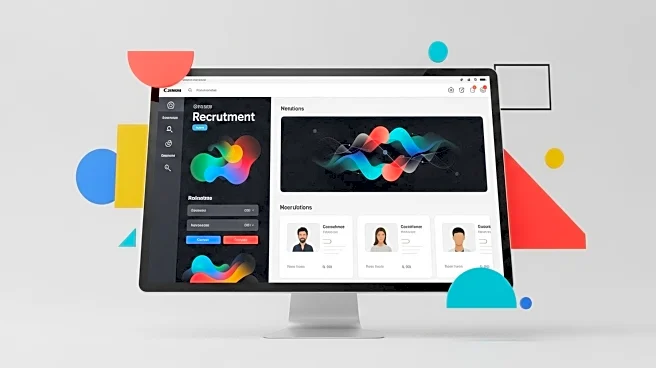What's Happening?
Teenagers today face a unique challenge as they navigate an environment designed to keep them engaged with their devices. According to the 2019 Common Sense census, the average teenager spends over seven hours daily on screens, with nearly half of that time dedicated to social media. This engagement is not accidental; it is the result of deliberate design choices by social media platforms like TikTok, Instagram, and Snapchat, which utilize behavioral psychology to keep users hooked. These platforms act as attention laboratories, employing strategies such as unexpected rewards to maintain user engagement. The fear of missing out (FOMO) further exacerbates this issue, driving teenagers to constantly check their devices to stay connected and informed. Critics argue that this is not merely a matter of self-discipline but a consequence of intentional design choices that make disengagement difficult.
Why It's Important?
The pervasive use of social media among teenagers has significant implications for their mental health and social development. The engineered engagement strategies employed by these platforms can lead to increased anxiety, depression, and a sense of isolation among young users. As teenagers become more reliant on their devices for social interaction and emotional support, they may struggle to develop real-world social skills and relationships. This issue also raises concerns about privacy and data security, as these platforms collect vast amounts of personal information to tailor their engagement strategies. The societal impact is profound, as the next generation grows up in an environment where their attention is constantly commodified, potentially affecting their ability to focus, learn, and engage in meaningful activities.
What's Next?
Efforts to address device addiction among teenagers are gaining traction, with some technologists advocating for 'humane design' that prioritizes user well-being over engagement metrics. Features such as screen time restrictions, grayscale settings, and do-not-disturb modes are being explored as potential solutions to mitigate the negative effects of excessive device use. Additionally, there is a growing movement to educate teenagers and parents about the intentional design choices that drive device addiction, empowering them to make informed decisions about their digital consumption. As awareness increases, there may be a push for regulatory measures to ensure that social media platforms prioritize user health and safety.
Beyond the Headlines
The ethical implications of engineered social media engagement are significant, as they challenge the notion of free will and autonomy in the digital age. By manipulating user behavior through psychological strategies, these platforms raise questions about consent and the responsibility of tech companies to protect their users. The long-term cultural impact could include shifts in how society values attention and engagement, potentially leading to new norms around digital consumption and interaction. As the conversation around device addiction evolves, it may prompt broader discussions about the role of technology in shaping human behavior and the need for ethical guidelines in tech design.










